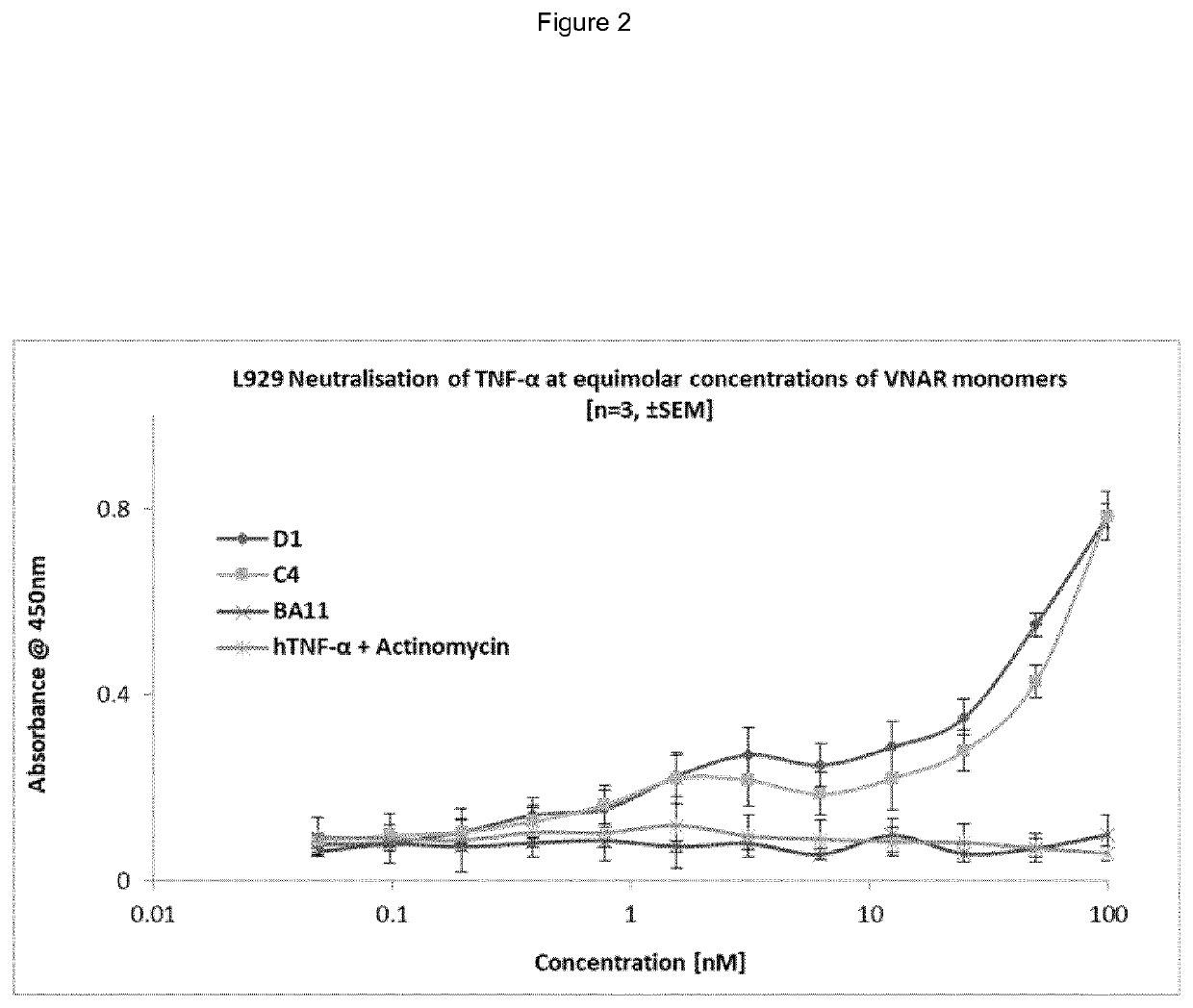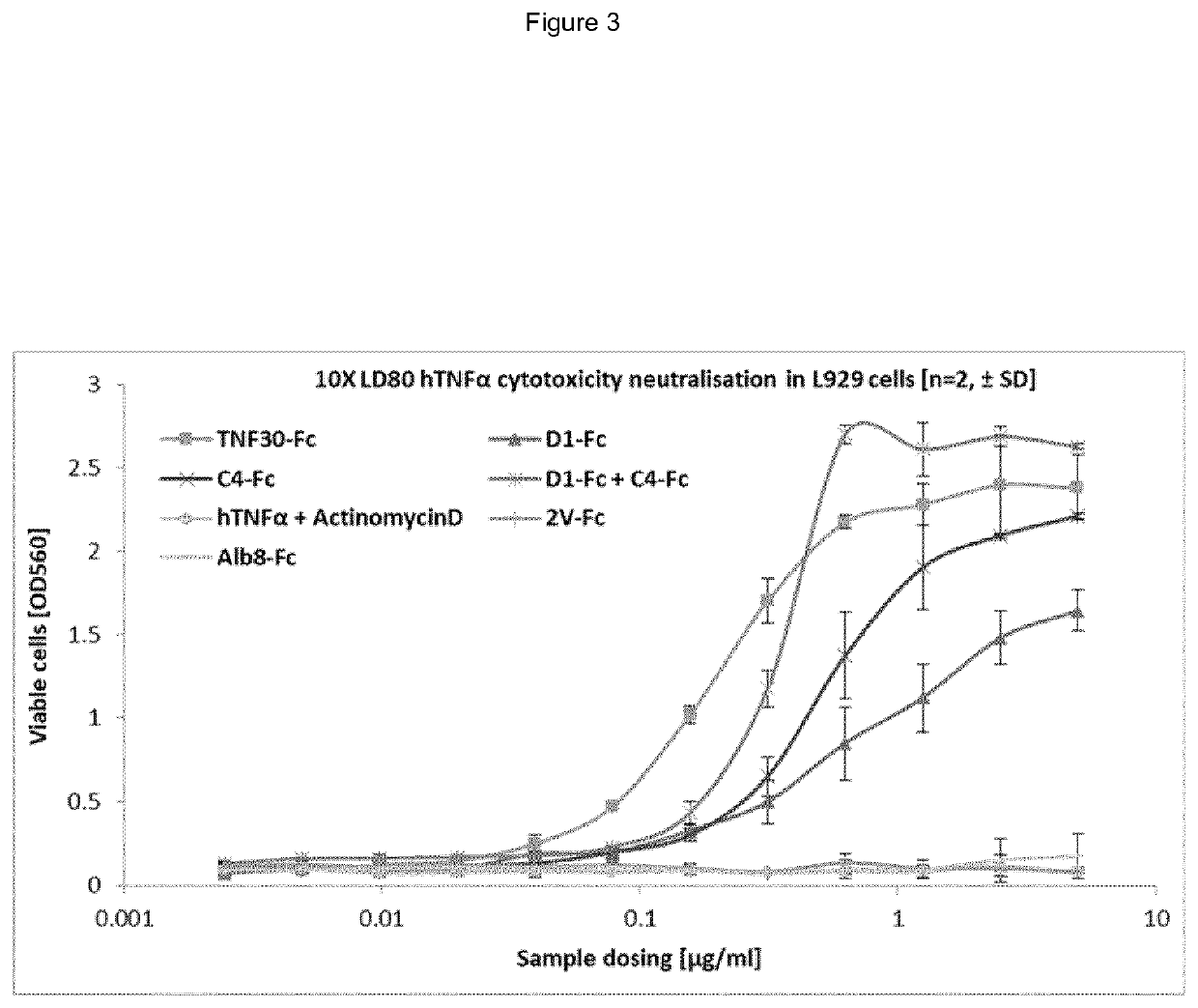Specific binding molecules
a specific binding and molecule technology, applied in the field of multidomain specific binding molecules, can solve the problem that vnars might not be able to efficiently form dimeric fusion molecules
- Summary
- Abstract
- Description
- Claims
- Application Information
AI Technical Summary
Benefits of technology
Problems solved by technology
Method used
Image
Examples
example 1
of Specific Antigen Binding VNARs
A. TNF Binding VNARs
Immunization and Selection
[0226]Nurse sharks [Ginglymostoma cirratum] were placed in containers containing artificial sea water containing 0.1% (w / v) tricaine methanesulfonate [MS-222]. Following attainment of desired level of narcosis, they were removed for immunisation or bleeding. hTNFα [250 μg] emulsified in complete Freund's adjuvant [CFA] was injected using a 20 gauge needle into the lateral fin of the shark. Boosts were given at 4 week intervals intravenously into the caudal vein as soluble antigen in Phosphate buffered saline (PBS) [sample 0.45 μM sterile filtered]. Blood samples were collected from the caudal vein into a 30 ml syringe containing 200 μl porcine heparin [1000 U / ml in PBS]. Blood samples were spun at 2000 rpm for 10 min to separate blood cells from plasma. The plasma supernatant fraction was carefully removed into a sterile tube with RNA stabilisation buffer, stored at −80° C.
Detection of hTNFα Specific IgNA...
PUM
| Property | Measurement | Unit |
|---|---|---|
| pH | aaaaa | aaaaa |
| pH | aaaaa | aaaaa |
| concentration | aaaaa | aaaaa |
Abstract
Description
Claims
Application Information
 Login to View More
Login to View More - R&D
- Intellectual Property
- Life Sciences
- Materials
- Tech Scout
- Unparalleled Data Quality
- Higher Quality Content
- 60% Fewer Hallucinations
Browse by: Latest US Patents, China's latest patents, Technical Efficacy Thesaurus, Application Domain, Technology Topic, Popular Technical Reports.
© 2025 PatSnap. All rights reserved.Legal|Privacy policy|Modern Slavery Act Transparency Statement|Sitemap|About US| Contact US: help@patsnap.com



